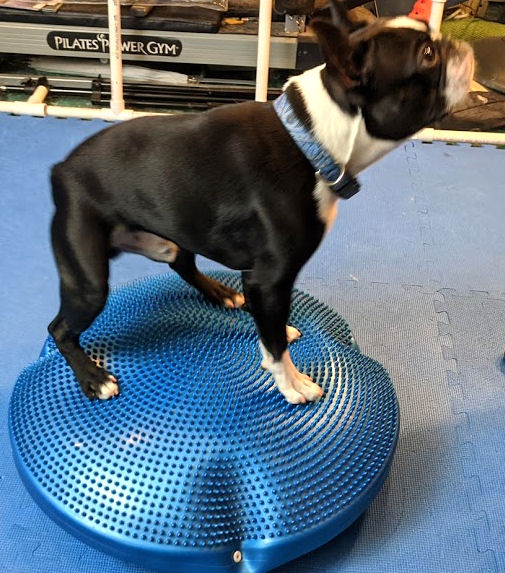Dogs tell us everything we need to know to be effective trainers. It’s how well we’re paying attention that makes the difference. Dogs are really honest – brutally so. And they’re excellent at pointing out the gaps in our training. Dogs are notorious for tattling on their trainers.

Simon demonstrated the point this week. The “Stand” exercise has always been challenging for him. Fran had to change the word to “Station,” after he became convinced that “Stand” meant sort-of-crouching with his butt in the air. Stand has always been a weird bugaboo for him. (Learn more about starting new, rather than fixing it in the tip: “Don’t Fix Your Dog.”)
Lately, he’s been spot-on when he hears “Station” in the “Stand for Exam” exercise in Novice class. From the heel position, he pops up like a champ, and stands like a stone for the “head, shoulder, hip” examination. Naturally, we expected that he now understands what “Station” means.
Take nothing for granted
We found out – not so much. When we’re out in the yard, we play recall games with the dogs. They run back and forth between us for treats. Sometimes they get rewards just for coming. Other times they have to “do something” to get a treat. The other day Hope said “Station!” to Simon as he came to a stop in front of her. All he had to do was stand still. He did everything but.
Fran tried it – after all, he is her dog and training partner. Same result – down, sit, back up, etc. Everything but the stand we were looking for. She tried again with Simon at her side instead of in front of her. Perfect “Station!”
Dogs always tell
Simon was telling us, clear as day, that he understands “Station” only in context. He hasn’t generalized it at all. It matters where he’s positioned, where we’re training, and who’s asking him for the behavior. And, when he told us, we’re listening to him.
When your dog highlights the gaps in training, don’t be disappointed or frustrated. If your dog understands parts of the whole, you’re on track for filling in the rest. Just like you taught your dog the parts he/she knows, you can build understanding for the whole behavior.
Work the arc
In the example of Simon’s “Station!,” we’ll start by working a step at a time. Literally. Starting at heel position, we’ll take a step away, return and reward “Station!” if he stays put. Then we’ll take a small, side step away before we say “Station!” and see if he understands. We’ll gradually work in an arc, until we can stand facing him and he understands when we give the command.
Once dogs understand a word means the same thing no matter where you are, what you’re doing, or who says it, they’ve got it. The same holds true for hand signals. It may need a refresh once in a while, but it won’t be starting from scratch. As long as you use the command or signal once in a while, it should stay in their memory banks.






